| Lesson 4 | Building a use case diagram |
| Objective | Construct a Use Case Diagram from a Problem Statement |
Construct Use Case Diagram from Problem Statement
The key to building a use case diagram that is based on a problem statement is to listen closely to the subject matter experts (SME) as they describe the problem domain to you. The SMEs cannot describe the problem domain without talking about the actors and use cases of the system. Users appear as the subject in most sentences describing how the system is used. For example, the SMEs might say,
The agents update the customer address.The agent uses the system to change information stored by the system. Hence, the agent becomes a potential actor in your use case diagram. The actions described in the problem statement become potential use cases. In the example just used, “update address” becomes a candidate use case.
What to include in your Use Case Diagram
However, just because a SME says something does not mean it necessarily belongs in your use case diagram. Keep in mind that the context of
the system, the scope of the project, and the constraints on the project and system will provide you with the criteria from which you will build your use case diagram. Also remember that the scope of project initiation maintains an encapsulated view of the system. This means that only the features of the system that must be visible from outside the system should appear on your use case diagram.
It often works well to have the "subject matter experts" develop the use case diagram with you. Use the drawing process as an opportunity to ask probing questions about the content, always applying the criteria described above to decide whether or not to include what the SMEs say.
The Interview Process
Let us step through a sample use case interview process using the SlideShow below.
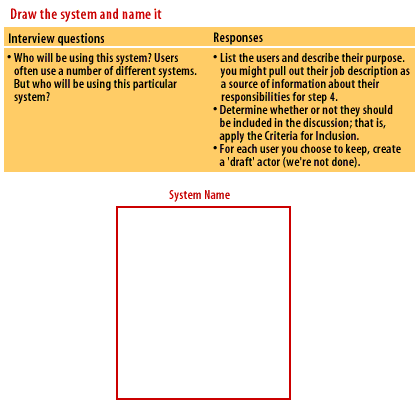
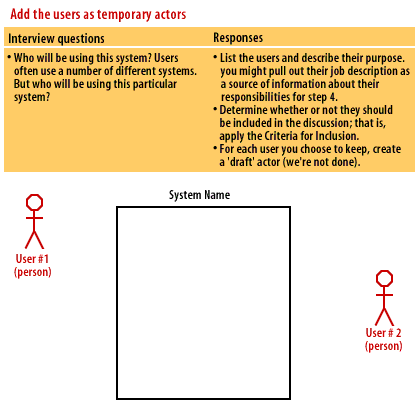
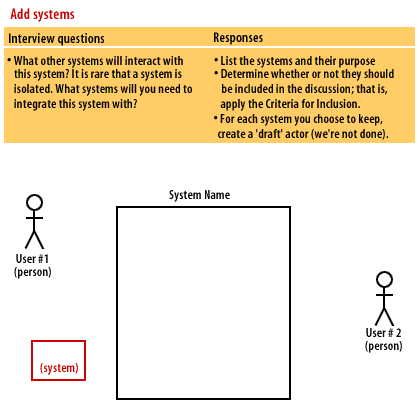
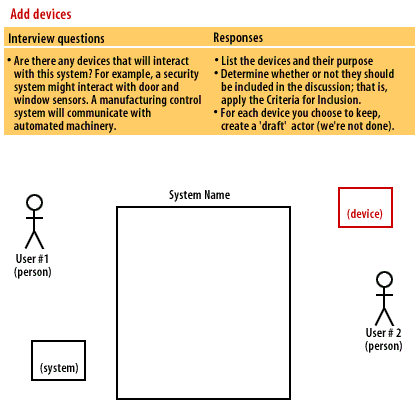
Responses: 1) List the devices and their purpose, 2) Determine whether or not they should be included in the discussion: that is, apply the Criteria for Inclusion, 3) For each device you choose to keep, create a 'draft' actor ( we are not done)
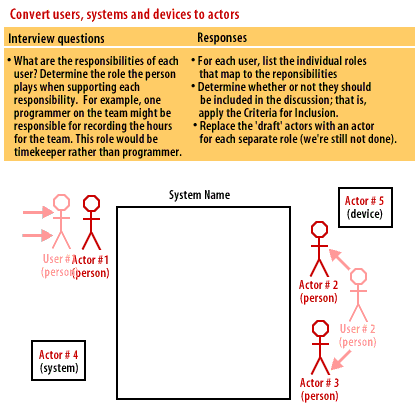
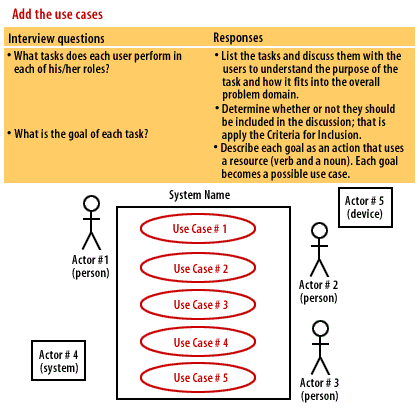
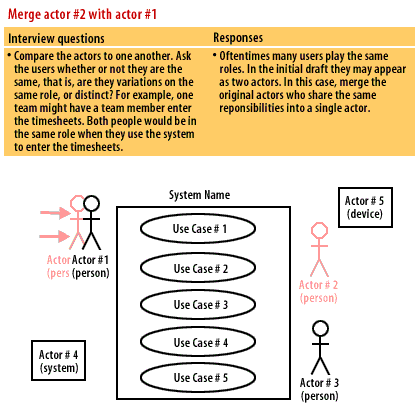
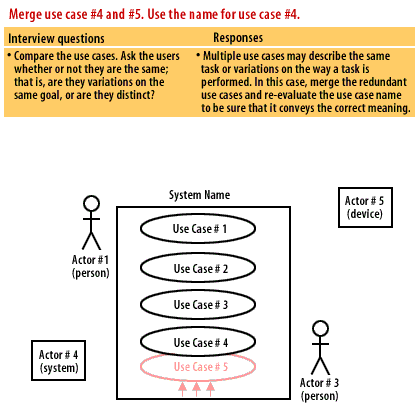
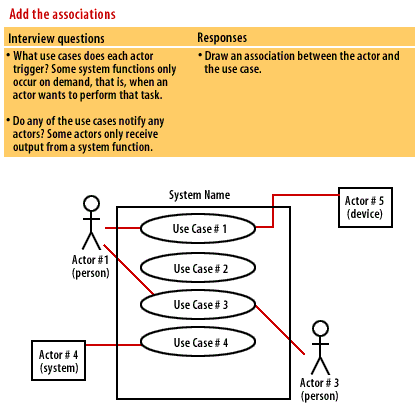
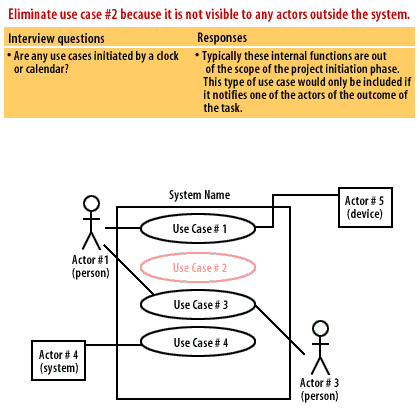
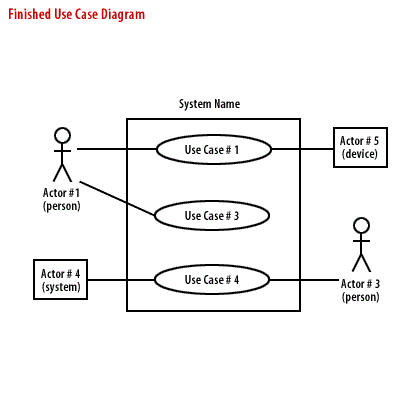
Writing Effective Use Cases
Build Use Case Diagram - Exercise
Click the Exercise link below to build a use case diagram for an online delivery system. This is the fifth exercise in the course project.
Build Use Case Diagram - Exercise
Build Use Case Diagram - Exercise